1. The Amish Don’t Use Any Technology

A lot of people think Amish life means rejecting every modern convenience, but that’s not exactly true. The Amish carefully choose which technologies fit within their values and community guidelines, NRP reports. Many use gas-powered refrigerators, battery-operated lights, and even solar panels, depending on their church district’s rules. Some even have phones—but they’re often kept in a shed or shared among families to avoid disrupting their way of life.
The key is not rejecting technology outright, but controlling how it’s used. The Amish fear that too much convenience could weaken their family and community ties. That’s why they avoid personal cars but might hire a driver when necessary. It’s about maintaining a balance between modern advancements and their religious principles.
2. Amish People Don’t Pay Taxes

Some assume the Amish get a free ride when it comes to taxes, but they actually pay most of the same ones as everyone else, according to The Washington Post. They pay property taxes, state and federal income taxes, sales taxes, and even school taxes—despite not using public schools. The big exception is Social Security and Medicare, which they don’t pay into because they refuse government benefits. Instead, they rely on their community to take care of the elderly and those in need.
This exemption isn’t about getting out of paying—it’s about their religious belief in taking care of their own. The Amish have a strong tradition of mutual aid, meaning they pool resources to support one another. If someone has medical bills, the community pitches in to cover costs. In a way, it’s their own version of an insurance system, just without government involvement.
3. They Can’t Ride in Cars
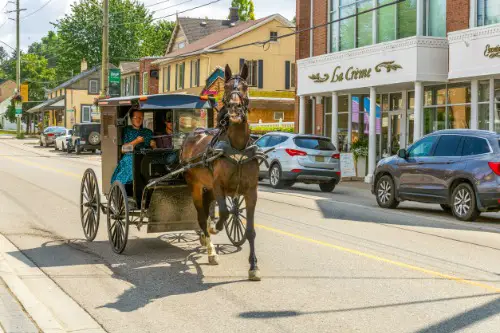
It’s true that the Amish don’t own cars, but that doesn’t mean they never set foot in one, according to the Amish Heritage Foundation. Many hire “English” (non-Amish) drivers when they need to travel long distances, such as for work, medical appointments, or family emergencies. They see car ownership as a path to independence that could weaken their close-knit communities. However, using a car as a tool rather than a personal luxury is generally acceptable.
For everyday travel, most Amish rely on horse-drawn buggies, bicycles, or even scooters. Some Amish businesses also use delivery services or work with non-Amish partners who have vehicles. The key distinction is ownership—having a car means personal freedom, which could lead people away from the Amish way of life. By avoiding ownership but occasionally using cars when necessary, they maintain their values while still getting things done.
4. Amish Life Is the Same Everywhere
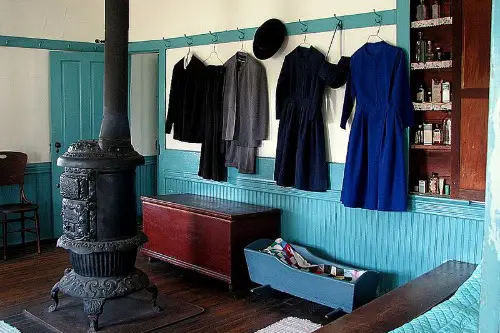
People often think of the Amish as one big group that follows the same rules, but that couldn’t be further from the truth. Amish communities vary widely in their traditions, dress, technology use, and even language dialects, according to the Everyday Sociology Blog. The Old Order Amish are the most traditional, while some New Order Amish allow more modern conveniences, like electricity and phones. Every church district decides its own Ordnung, or set of rules, which can be quite different from one community to another.
For example, some Amish allow rubber tires on their buggies, while others insist on metal wheels. In some places, Amish men wear beards with no mustaches, while in others, facial hair rules are more relaxed. Even the level of interaction with outsiders varies, with some communities being more open to tourism and business. So, the idea that there’s a single “Amish way” is way off base.
5. Amish People Don’t Have Fun

Because Amish life is strict, many assume it’s also joyless—but that’s just not true. The Amish value hard work, but they also love games, singing, storytelling, and spending time with family and friends. They often hold large gatherings, where they play board games, softball, and volleyball. Music is also a big part of their culture, though it’s usually a cappella, since they avoid musical instruments.
Even young people have fun, especially during Rumspringa, the period when Amish teens can experience the outside world before choosing to be baptized. Amish weddings and barn raisings are also major social events, filled with food, laughter, and community spirit. The difference is that their fun tends to be group-centered rather than individualistic. Instead of focusing on personal entertainment, Amish social life revolves around relationships and shared experiences.
6. They Don’t Use Electricity
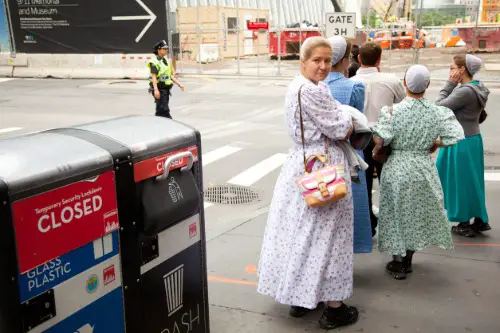
This is one of the biggest myths about the Amish, but the reality is more complicated, according to Discover Lancaster. Most Amish don’t connect to the public electrical grid because they want to remain separate from the world. However, many use batteries, generators, and even solar power to run necessary equipment. Some businesses rely on compressed air or hydraulic power to operate tools and machinery.
The concern isn’t electricity itself but the idea that being plugged into the grid could lead to greater outside influence. By using alternative sources, they can control how much modern convenience enters their daily lives. Many Amish homes have propane-powered appliances and even LED lights in some cases. It’s all about using technology in a way that aligns with their values rather than letting it dictate their lifestyle.
7. The Amish Are Anti-Education

While the Amish only attend school through the eighth grade, that doesn’t mean they don’t value education. They believe formal schooling should prepare children for practical life skills rather than academic careers. Amish schools focus on reading, writing, arithmetic, and vocational skills like farming, carpentry, and homemaking. Most teachers are young Amish women who have completed the same level of education.
After eighth grade, learning continues informally through apprenticeships and hands-on experience. Boys often learn trades like woodworking or mechanics, while girls focus on homemaking and community roles. Some Amish even take business classes to help with running family enterprises. The goal isn’t to reject knowledge but to ensure education aligns with their values and way of life.
8. Amish Marriages Are Arranged
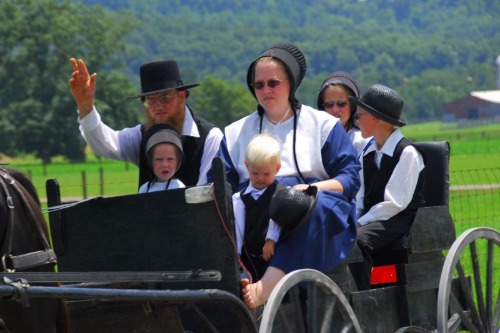
While Amish dating customs are different from mainstream society, marriages aren’t arranged by parents. Young people choose their own partners, usually within their own community, and dating is taken seriously. Courtship often happens at social gatherings, church events, or through letter writing. Couples usually start dating in their late teens or early twenties, and relationships are kept private until an official announcement is made.
Once engaged, the wedding follows a traditional structure, with a focus on faith and community. There’s no engagement ring or elaborate proposal—just a mutual decision to commit. The wedding itself is a simple yet joyous event, often held at the bride’s home. The idea of arranged marriages comes from confusion with other traditional religious groups, but it’s not how the Amish do things.
9. The Amish Don’t Interact with Outsiders

Some people assume the Amish keep to themselves and never engage with the outside world, but that’s not really true. While they do maintain a degree of separation, many Amish run businesses that rely on non-Amish customers. Farmers sell produce at markets, craftsmen build furniture for outsiders, and Amish-run construction crews are well-known for their high-quality work. Some even travel for jobs, working alongside non-Amish coworkers in fields like carpentry and manufacturing.
Beyond business, the Amish interact with outsiders in other ways, too. They often hire non-Amish drivers, visit English doctors, and work with lawyers for business matters. Tourists are welcomed in many Amish communities, as long as they’re respectful. While they don’t seek out mainstream culture, they’re not completely cut off from it either.
10. Amish Women Have No Rights
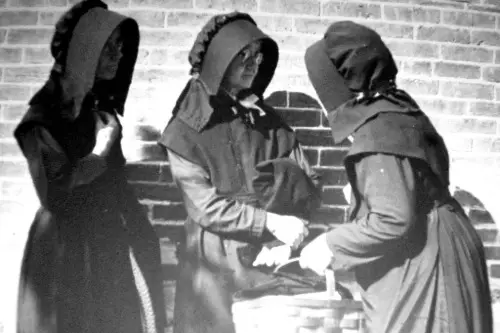
The Amish do have traditional gender roles, but that doesn’t mean women are powerless. Amish women manage the household, raise children, and often contribute financially through businesses like baking, quilting, and selling handmade goods. Many are skilled bookkeepers, handling the finances for family-run businesses. In Amish society, women’s opinions are valued, especially when it comes to family and community matters.
While they don’t take on leadership roles in the church, their influence is still significant. Mothers play a key role in passing down traditions and faith to the next generation. In some communities, Amish women own businesses and make important financial decisions. Their role is different from what’s typical in modern society, but it’s not as restrictive as outsiders often assume.
11. The Amish Reject Modern Medicine

A lot of people think the Amish rely only on folk remedies, but that’s not entirely accurate. While they do use home remedies for minor illnesses, they also seek professional medical care when necessary. Many Amish visit doctors, dentists, and even specialists for serious conditions. Some communities even allow surgeries, chemotherapy, and other modern treatments.
However, because they don’t have health insurance, they handle medical bills differently. The community often pools resources to cover expenses, and hospitals sometimes offer discounts since Amish patients pay in cash. They prefer to avoid unnecessary medical interventions, but they’re not against medicine itself. The decision to seek treatment is often based on practicality rather than outright rejection of modern healthcare.
12. All Amish Young People Leave for Rumspringa

Rumspringa is one of the most misunderstood aspects of Amish life, largely because of how it’s portrayed in movies and TV shows. It’s not a wild, rule-free period where every Amish teen goes on a partying spree. In reality, Rumspringa just refers to the time when young people, typically around 16, start socializing more before deciding whether to be baptized. Some may explore the outside world a little, but most stay within their community.
The majority of Amish teens don’t move away or live wildly different lives during this time. They might attend more social gatherings, dress slightly less conservatively, or visit non-Amish friends, but that’s about it. The idea that Rumspringa is a rebellious phase is mostly an exaggeration. In the end, over 80% of Amish youth choose to join the church and commit to Amish life.
13. Leaving the Amish Means Being Completely Shunned

While leaving the Amish can be difficult, it doesn’t always mean total excommunication. If someone leaves before being baptized, they can still maintain relationships with their family. However, if they leave after baptism, stricter shunning rules may apply, depending on the church district’s policies. In some cases, ex-members can’t eat at the same table as their Amish family, but they may still be allowed to visit.
Not all Amish groups enforce shunning in the same way. Some are more lenient, allowing continued contact with ex-members, especially for family matters. Others are stricter, fully cutting ties with those who leave the faith. While shunning is meant to encourage repentance, it’s not always as harsh or absolute as people assume.


